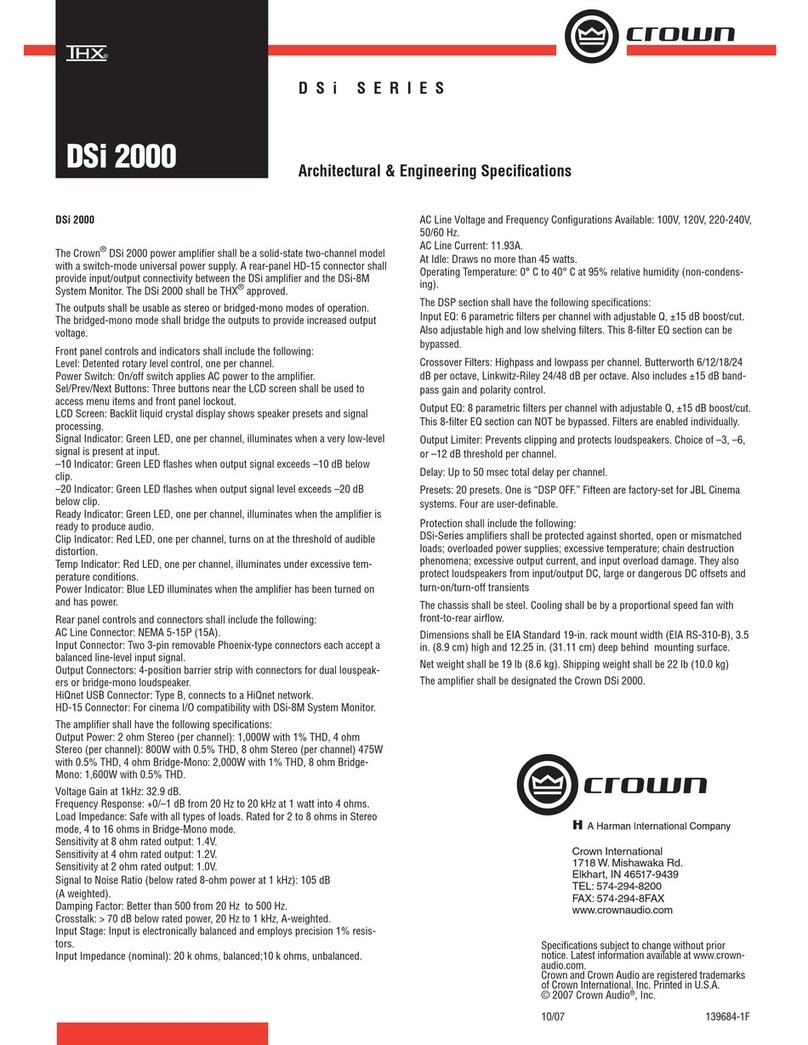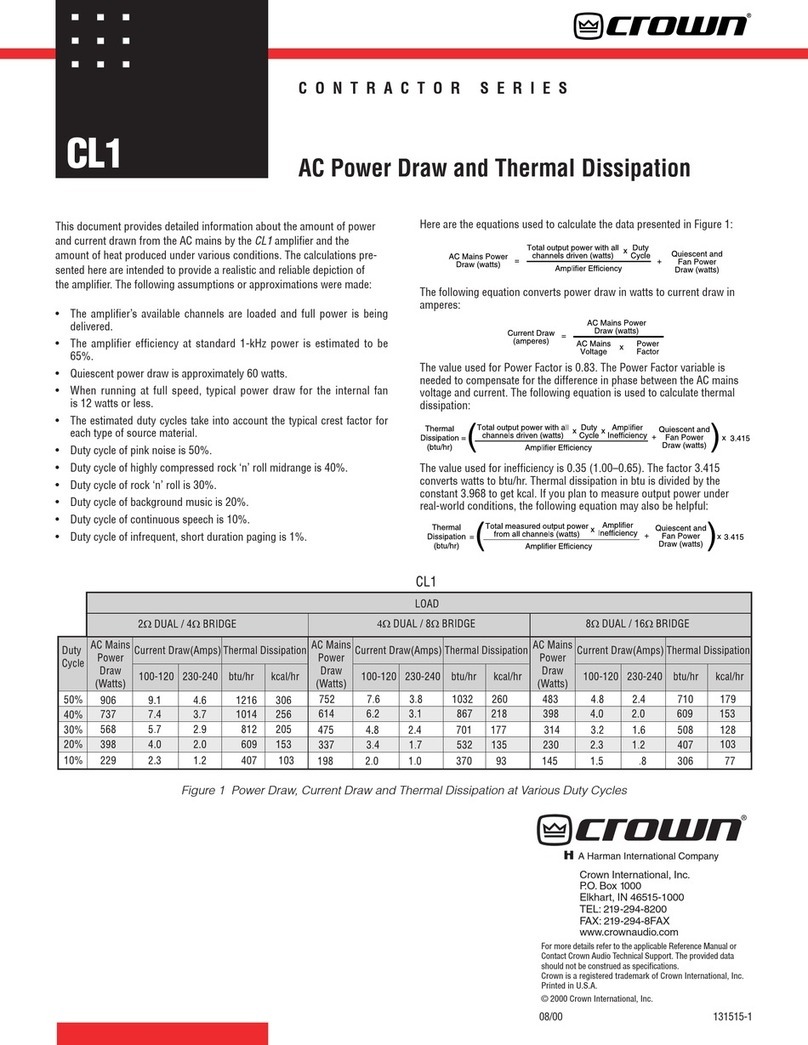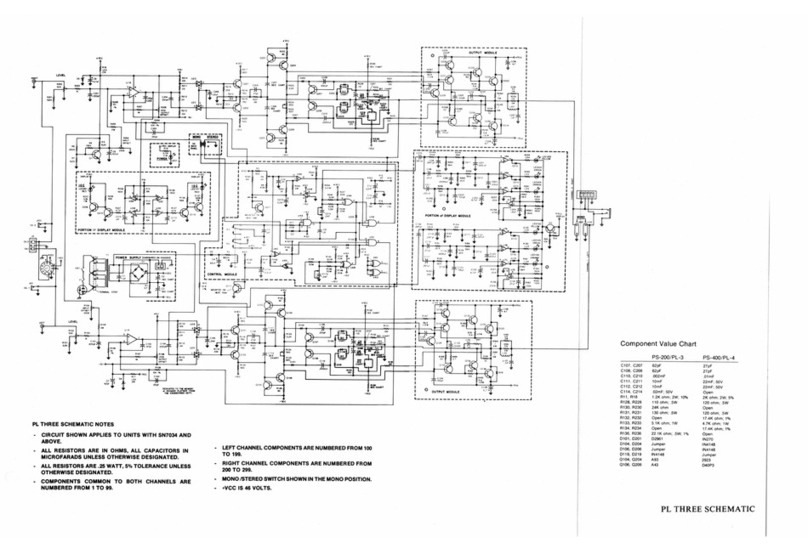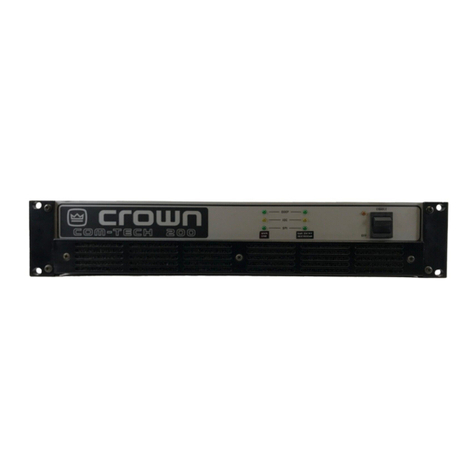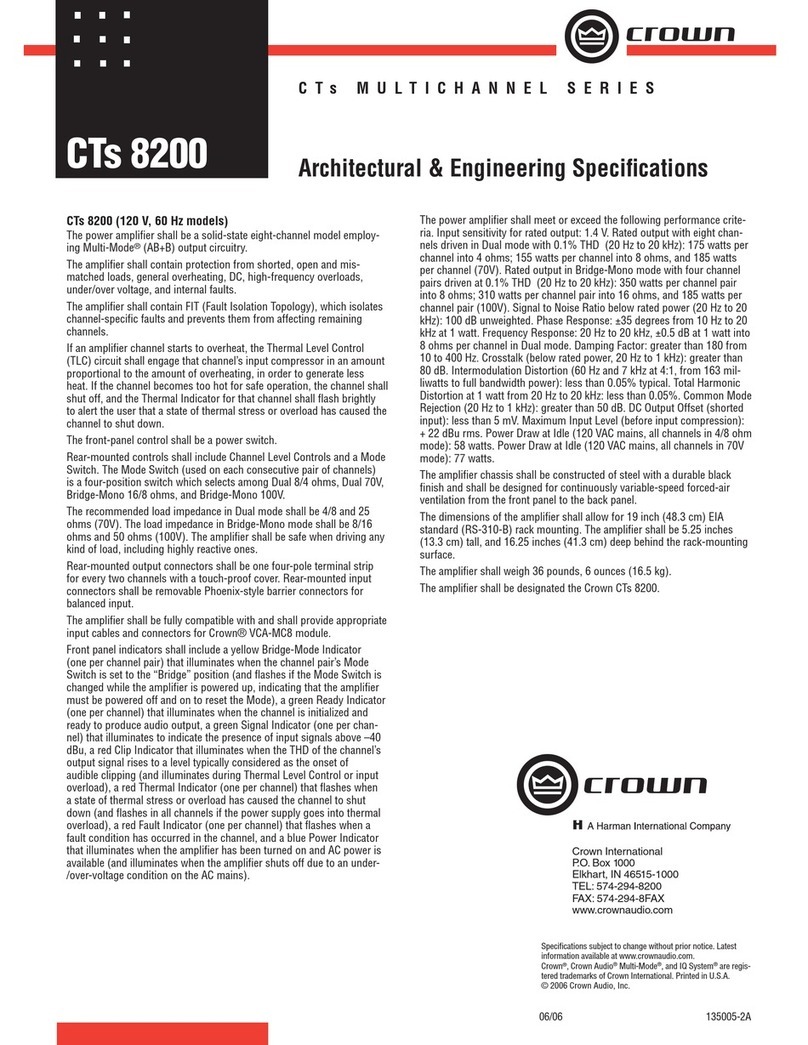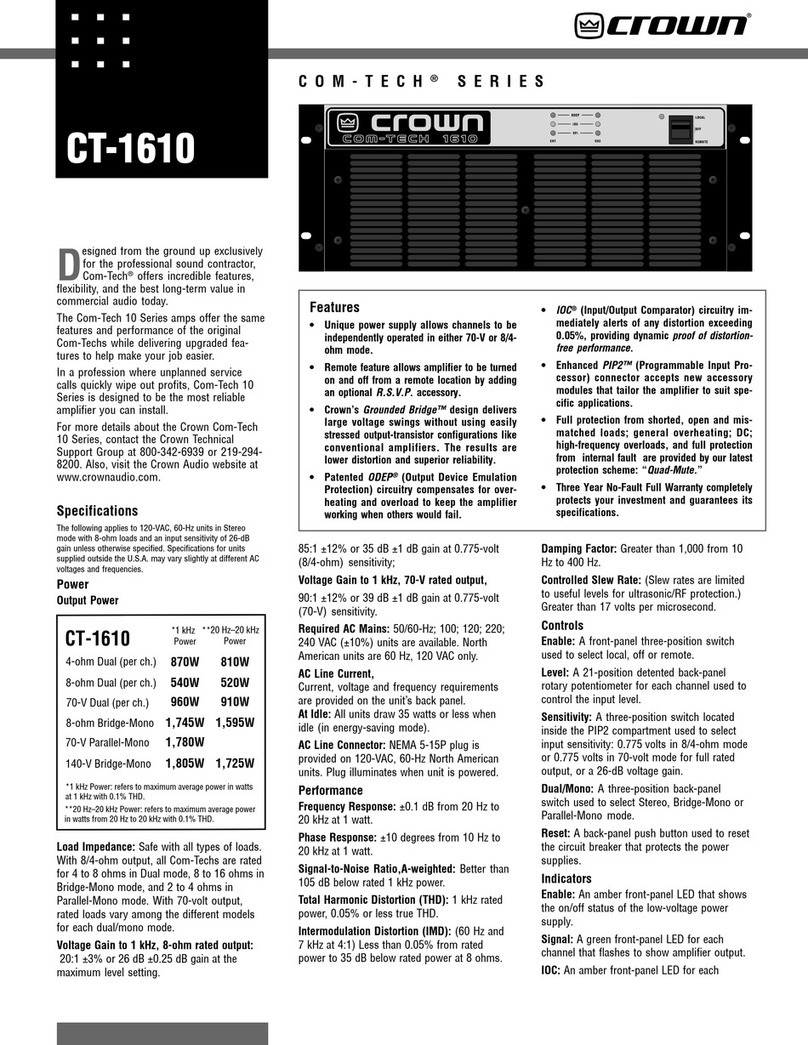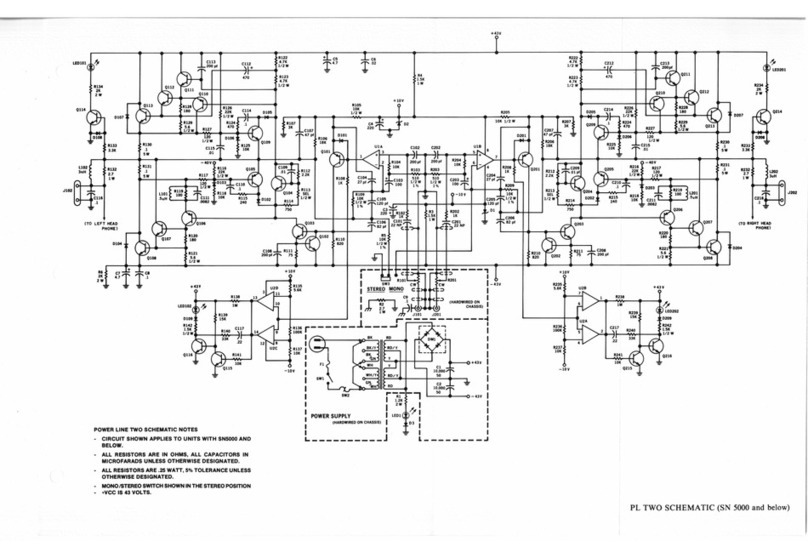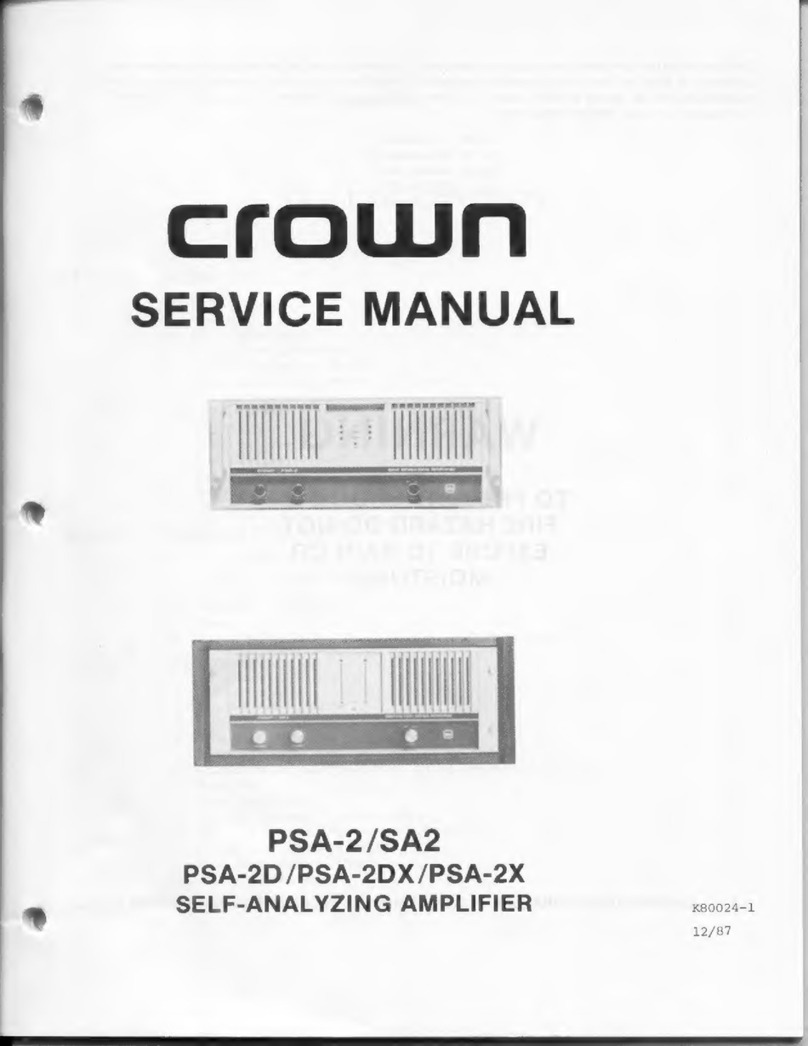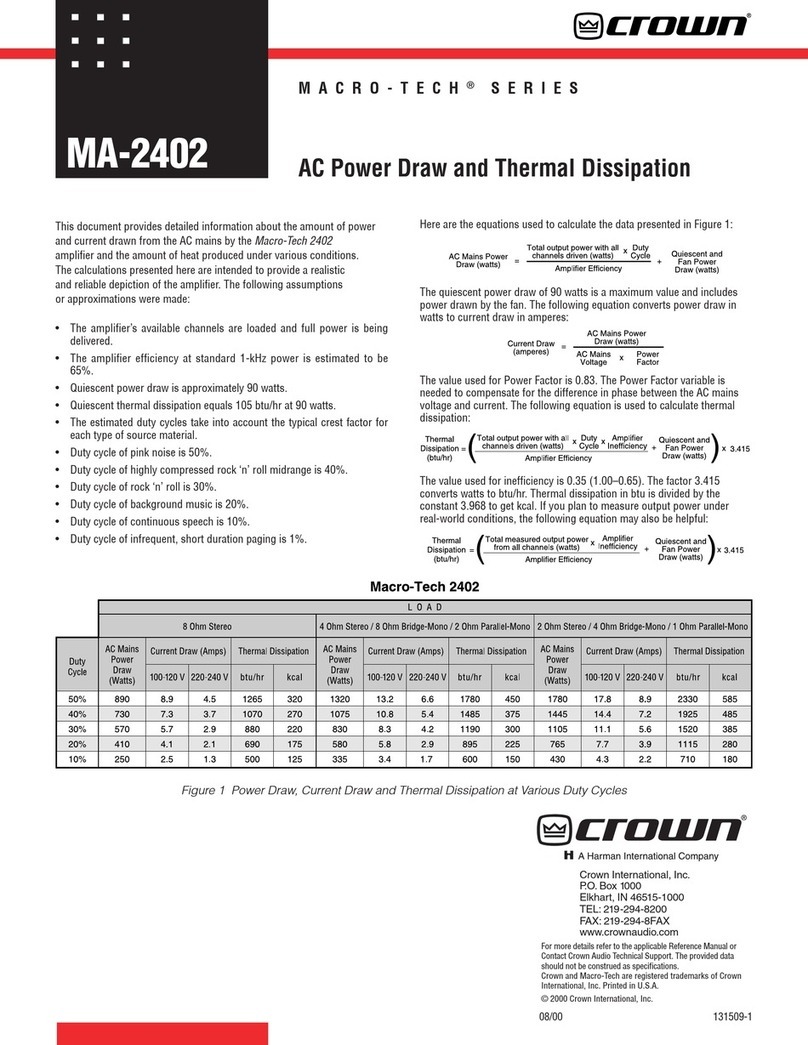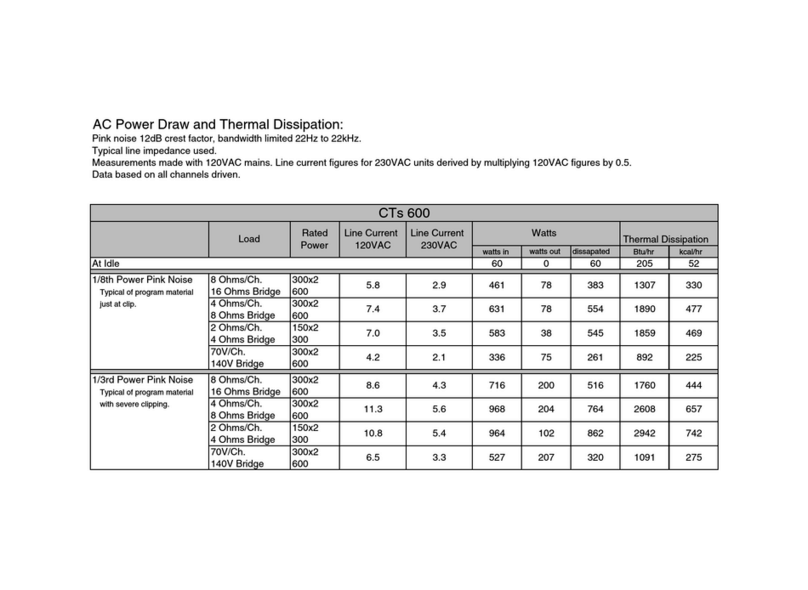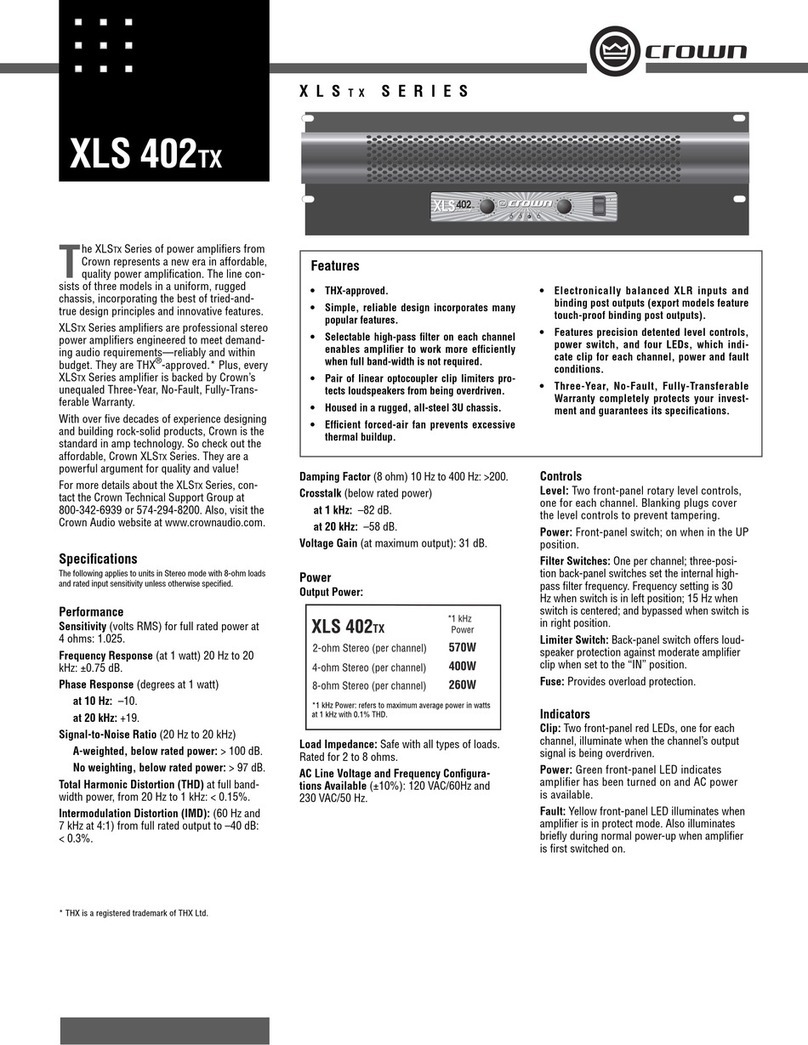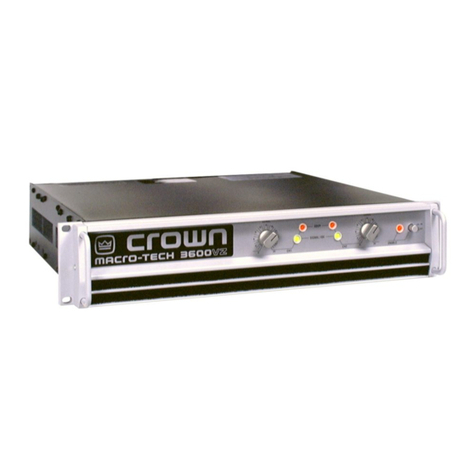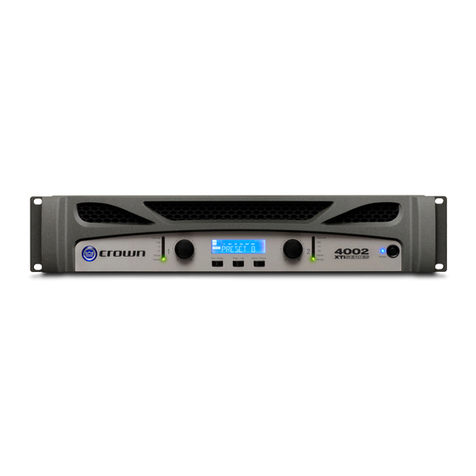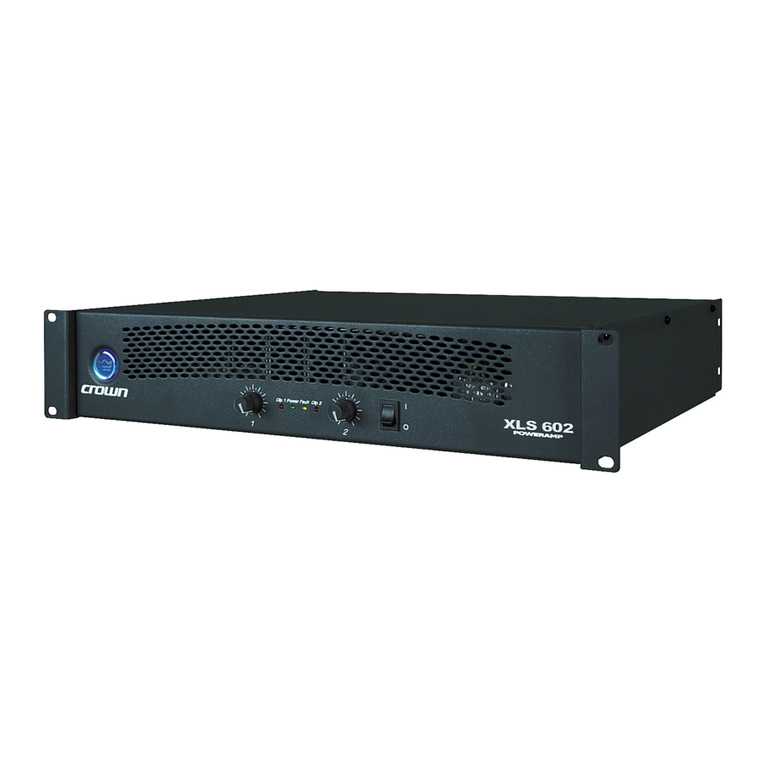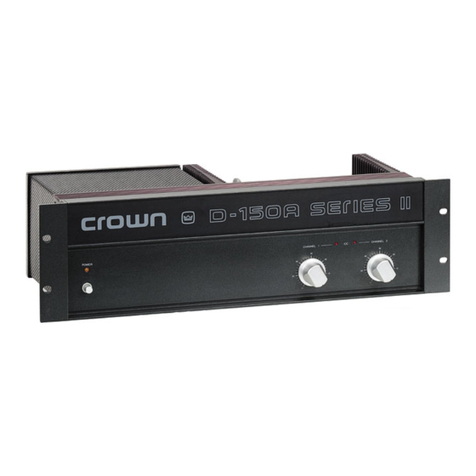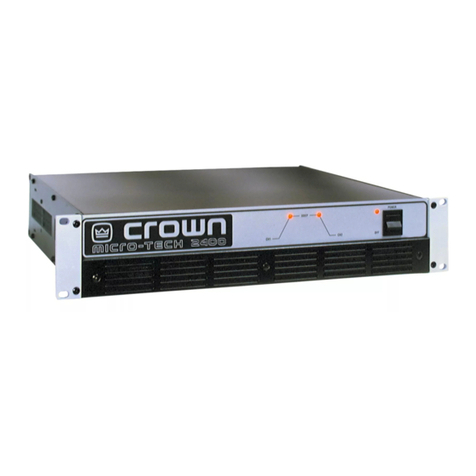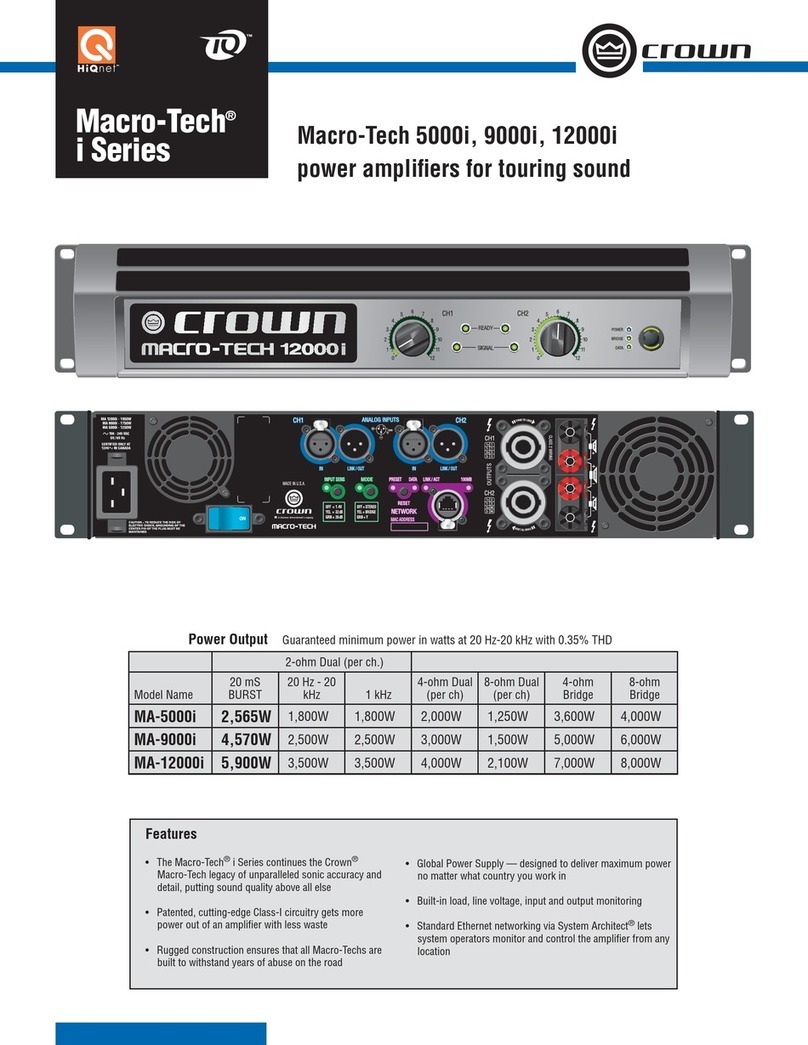
2
Sometimes a product fits an application so well, it
is deemed a classic. The term is synonymous with
the Crown®Macro-Tech Series of power amplifiers.
That product line, and its predecessor Micro-Tech®, sparked
innovative technologies that provided lower distortion, less
thermal stress, higher output power, greater reliability, more
power density and superior audio quality.
No compromises, no gimmicks. Just brilliant engineering
backed by superior manufacturing, support and an
unsurpassed commitment to quality.
Like all Crown amps, the defining characteristic of the Macro-
Tech Series is sonic accuracy. A tight, rock-solid low end, with
smooth, detailed highs and a well-defined midrange. In short,
Crown Macro-Tech Series
Enjoy!
the most accurate reproduction of an audio signal you’ve ever
heard. And because we put the quality of sound above all else,
Crown amplifiers are the most coveted in the business.
When it comes to manufacturing amps, our work is based on
one simple fact: there are no shortcuts to quality. And our Macro-
Techs have proven this time and time again in some of the most
demanding applications in the world.
For this special, limited Macro-Tech release, we wanted to bring
you more than just the typical operation manual. This brochure
goes much further, delving into the Macro-Tech’s development,
design philosophy, and advanced technical features. We’ve also
included some brochures from the past, a bio of Crown’s chief R&D
engineer Gerald Stanley, customer statistics, anecdotes and more.
Since 1984, Crown has shipped
approximately 272,625 MT and MA
amplifiers to date. That’s approximately
54 million watts into 4 ohms or 65
million watts into 2 ohms!
